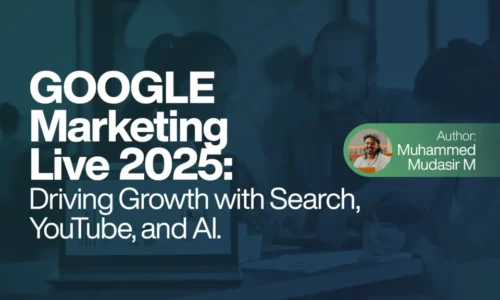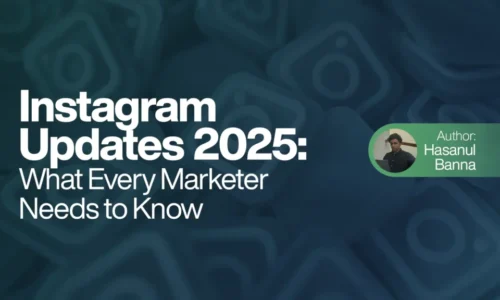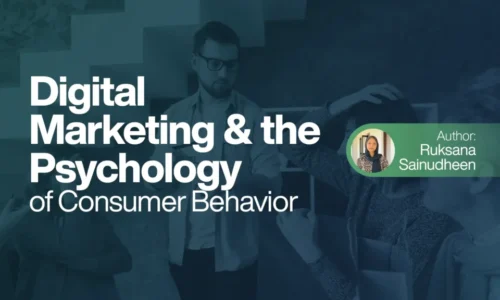How do I Create an Effective Influencer Marketing Campaign?
In today’s digital world, influencer marketing has become a game-changer for brands looking to grow their presence online. But how do you create a successful influencer marketing campaign that truly works? Don’t worry! In this blog, we’ll break it down into simple steps so you can easily implement a strategy that gets results.
Table of Contents
1. Set Clear Goals
Before you start reaching out to influencers, ask yourself: What do I want to achieve? Some common goals include:
- Increasing brand awareness
- Driving more traffic to your website
- Boosting sales or generating leads
- Growing social media followers
- Engaging with your audience
Having clear goals will help you track success and guide your campaign in the right direction.
Additionally, setting SMART (Specific, Measurable, Achievable, Relevant, and Time-bound) goals can give you a clear vision of how your influencer marketing campaign should be structured. A well-defined goal ensures that both you and the influencer are on the same page about what success looks like.
2. Know Your Target Audience
Understanding who your ideal customers are will help you choose the right influencers. Think about their:
- Age and location
- Interests and preferences
- Social media habits
- Buying behavior
When you know your audience well, you can connect with influencers who genuinely influence their purchasing decisions. Conduct surveys, analyze past customer data, and use social media insights to define your target audience more precisely.
Additionally, understanding what type of content your audience engages with the most is crucial. Do they prefer short-form videos, long-form blogs, or interactive content? The better you know your audience, the more effective your campaign will be.
3. Choose the Right Influencers
Not all influencers are the same! Based on your budget and campaign goals, you can collaborate with:
- Mega-influencers (1M+ followers): High reach, but expensive
- Macro-influencers (100K–1M followers): Great for brand awareness
- Micro-influencers (10K–100K followers): Strong engagement, niche audience
- Nano-influencers (1K–10K followers): Highly trusted, close-knit communities
Look at their engagement rate, content quality, and whether their values align with your brand before making a decision. Also, consider checking their audience demographics to ensure their followers match your target audience.
Before selecting influencers, also analyze their past collaborations. Have they worked with competitors? Do they have a history of genuine audience interactions? A high follower count doesn’t always mean high influence—engagement and authenticity matter more.
4. Craft an Engaging Campaign Strategy
Now, let’s decide what type of content you want influencers to create. Some popular options include:
- Product reviews and unboxing videos – Showcasing your product in an authentic way.
- Tutorials or how-to guides – Educating the audience on how to use your product.
- Giveaways and contests – Increasing engagement and brand awareness.
- Live Q&A sessions – Allowing real-time interaction between influencers and their audience.
- Behind-the-scenes content – Giving an inside look at your brand.
Make sure the content feels natural and aligns with both your brand and the influencer’s style. Authenticity is key in influencer marketing. Forced promotions can lead to audience distrust.
5. Plan Your Budget and Compensation
There are different ways to collaborate with influencers. Choose what works best for your campaign:
- Paid promotions: Fixed fee for posts or videos
- Affiliate marketing: Influencers earn a commission per sale
- Gifting products: Free products in exchange for content
- Revenue sharing: Percentage of sales driven by the influencer
Consider setting aside a dedicated budget for testing different influencer strategies and optimizing your campaign based on performance insights.
Another crucial factor is negotiating fair compensation. Some influencers might accept free products, while others require monetary payment. It’s always good to respect their worth and align expectations beforehand.
6. Communicate Expectations Clearly
Influencers love creative freedom, but you still need some guidelines! Provide them with a brief covering:
- Campaign goals and key messages
- Content style and format
- Posting schedule and deadlines
- Brand guidelines (logos, hashtags, disclosures)
Additionally, ensure that influencers are aware of the legal and ethical guidelines, such as disclosing sponsored content with hashtags like #Ad or #Sponsored.
Providing clear communication ensures both parties are on the same page and minimizes any misunderstandings. A strong collaboration is built on transparency and mutual respect.
7. Track Performance and Optimize
Once your campaign is live, track key performance indicators (KPIs) like:
- Engagement rate (likes, comments, shares)
- Website traffic (click-through rate)
- Sales and conversions
- Follower growth and reach
- Sentiment analysis (How people feel about your brand)
Use analytics tools like Google Analytics, Instagram Insights, or third-party influencer marketing platforms to measure your campaign’s performance. Based on the data, tweak your approach and optimize for better results.
Tracking performance also helps in deciding whether to extend your collaboration with an influencer. If an influencer’s audience responds well to your product, a long-term partnership might be beneficial.
8. Build Long-Term Influencer Relationships
Instead of one-time collaborations, consider building long-term partnerships with influencers who align with your brand. This fosters trust, increases authenticity, and ensures better engagement over time.
You can create ambassador programs where influencers become loyal advocates of your brand, regularly creating content and engaging with your audience.
Additionally, long-term relationships help create consistency in messaging. The more frequently an audience sees an influencer using a product, the more likely they are to trust it.
9. Leverage Different Social Media Platforms
Each platform has different influencer marketing strategies. Here’s how they differ:
- Instagram: Best for visual storytelling through posts, reels, and stories.
- YouTube: Ideal for in-depth reviews and tutorials.
- TikTok: Great for short, engaging, and viral content.
- Facebook: Works well for community-building and targeted ad promotions.
- LinkedIn: Effective for B2B influencer marketing campaigns.
Choosing the right platform will depend on where your target audience spends most of their time.
Another tip is to repurpose content across multiple platforms. A successful YouTube review can be turned into Instagram snippets or TikTok highlights to maximize reach.
10. Learn from Competitor Campaigns
Researching your competitors’ influencer marketing efforts can provide valuable insights. Look at what type of influencers they work with, the content they produce, and how their audience engages with their campaigns.
This can help you refine your own strategy and avoid common pitfalls. Additionally, analyze what worked well for competitors and how you can improve upon their strategy.
11. Engage with Influencer Content
Engagement shouldn’t stop once an influencer posts about your brand. You should:
- Like, comment, and share their posts.
- Feature influencer-generated content on your brand’s page.
- Respond to audience questions under the post.
By actively engaging, you increase visibility and show appreciation for the influencer’s efforts, strengthening your relationship.
Final Thoughts
Creating an effective influencer marketing campaign doesn’t have to be complicated. With the right goals, influencers, and strategy, you can successfully promote your brand and connect with your audience in a meaningful way.
Create an influencer marketing campaign that connects with your audience and delivers results. Stay creative, engage genuinely, and see your brand grow!
Author Info
Afsana, a freelance digital marketer in Bangalore.
Learner of CDA Digital Marketing Course Online.



